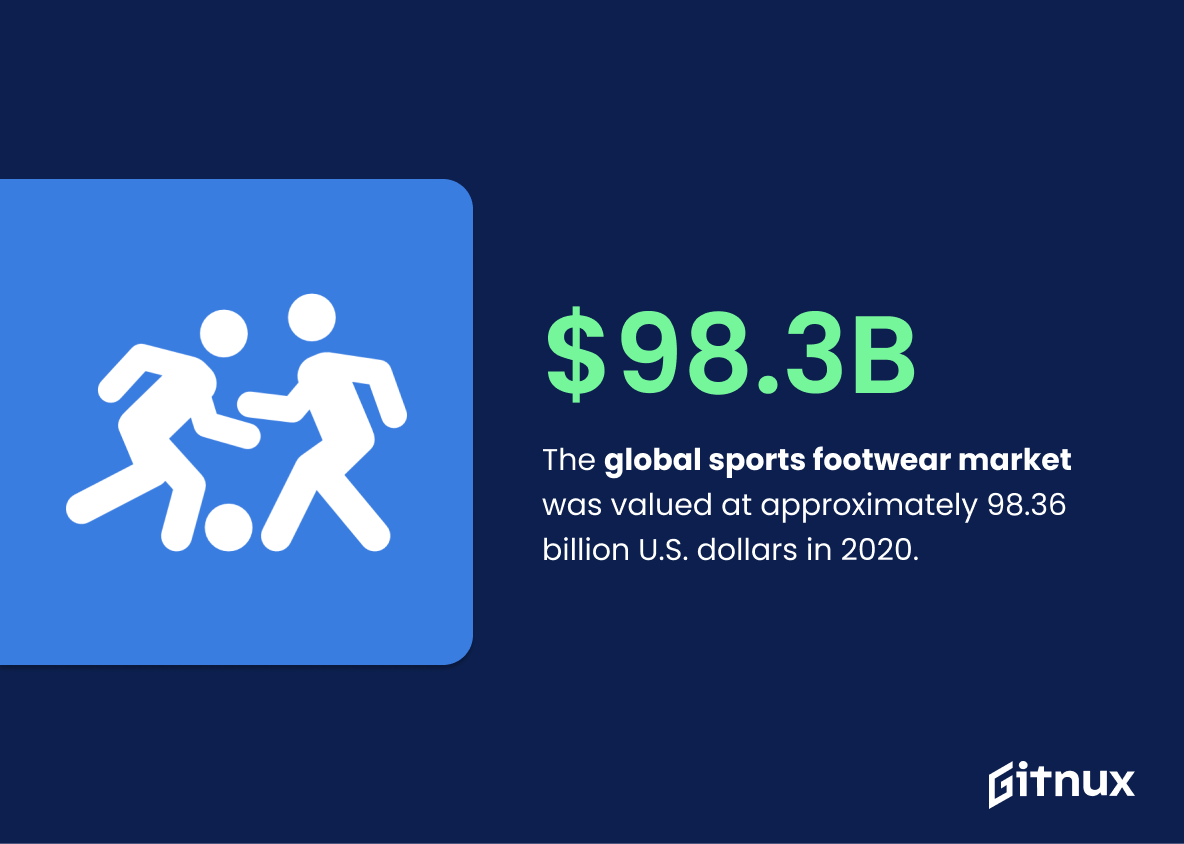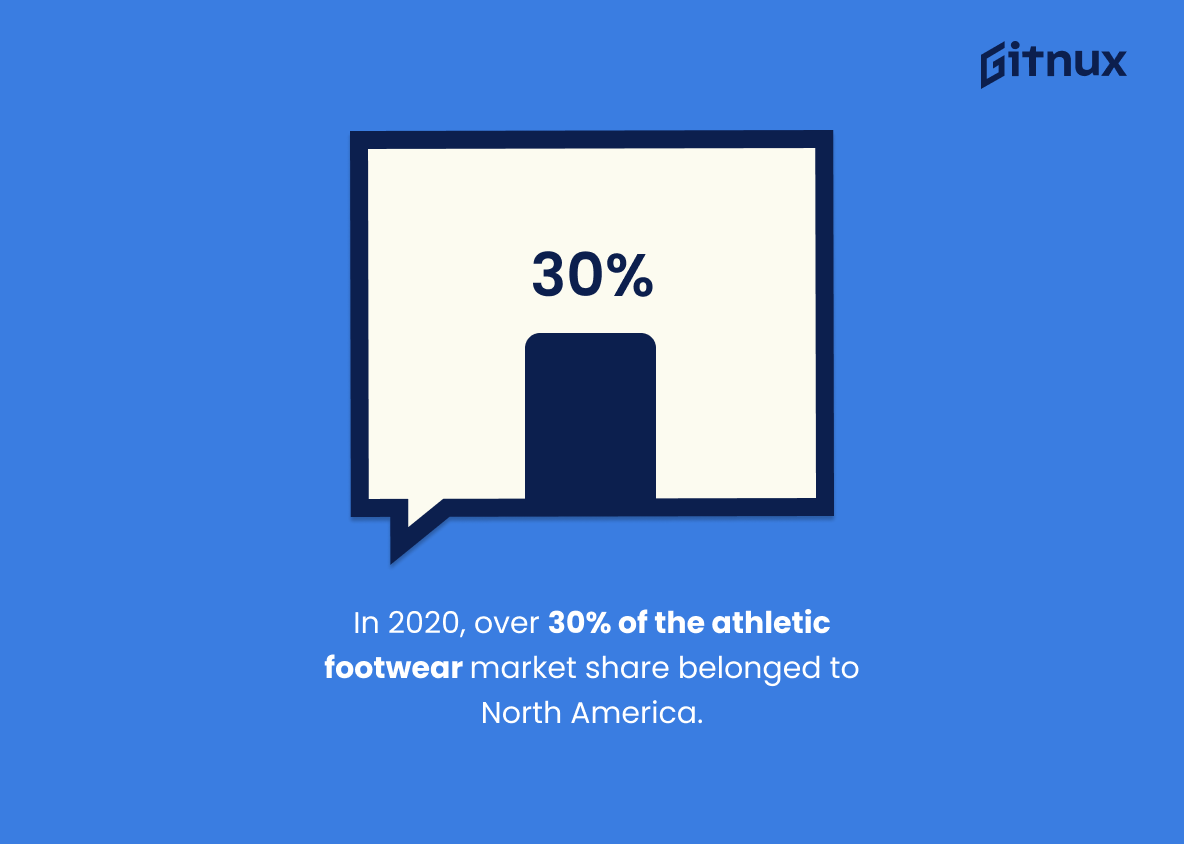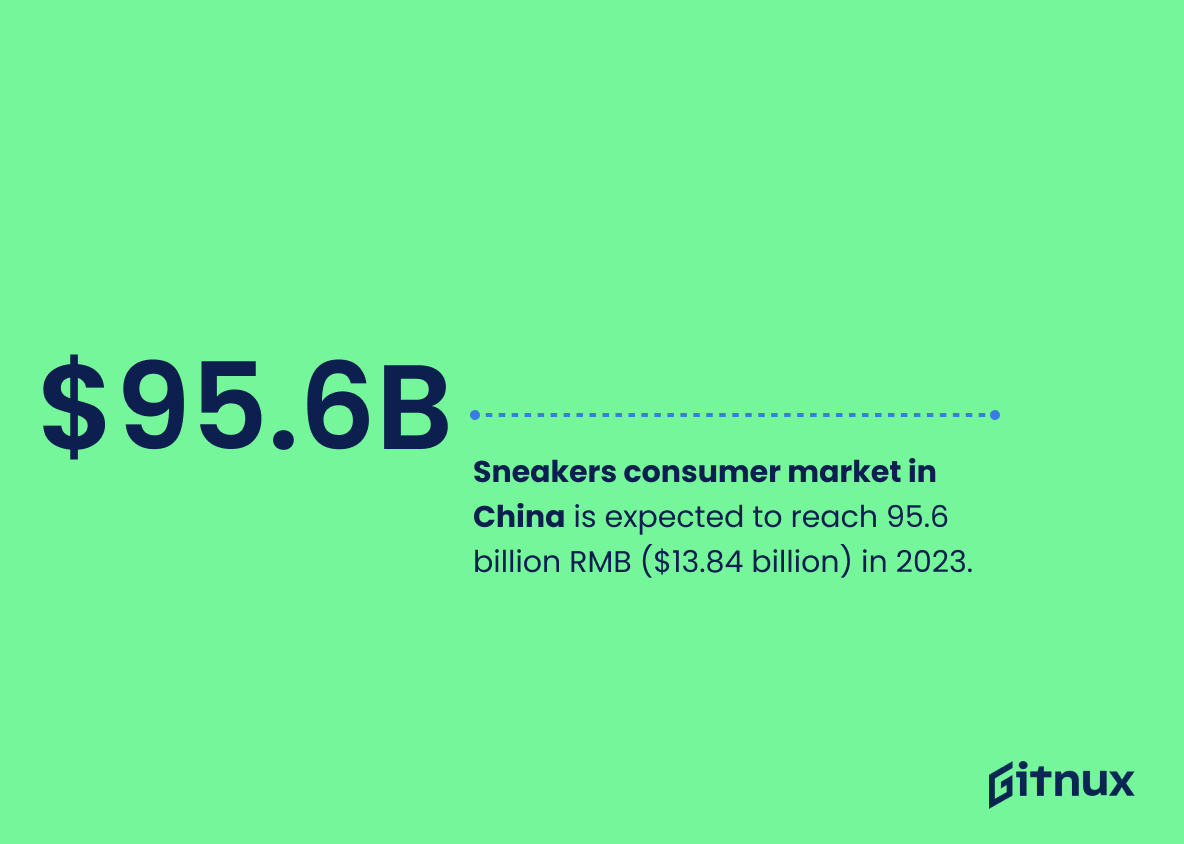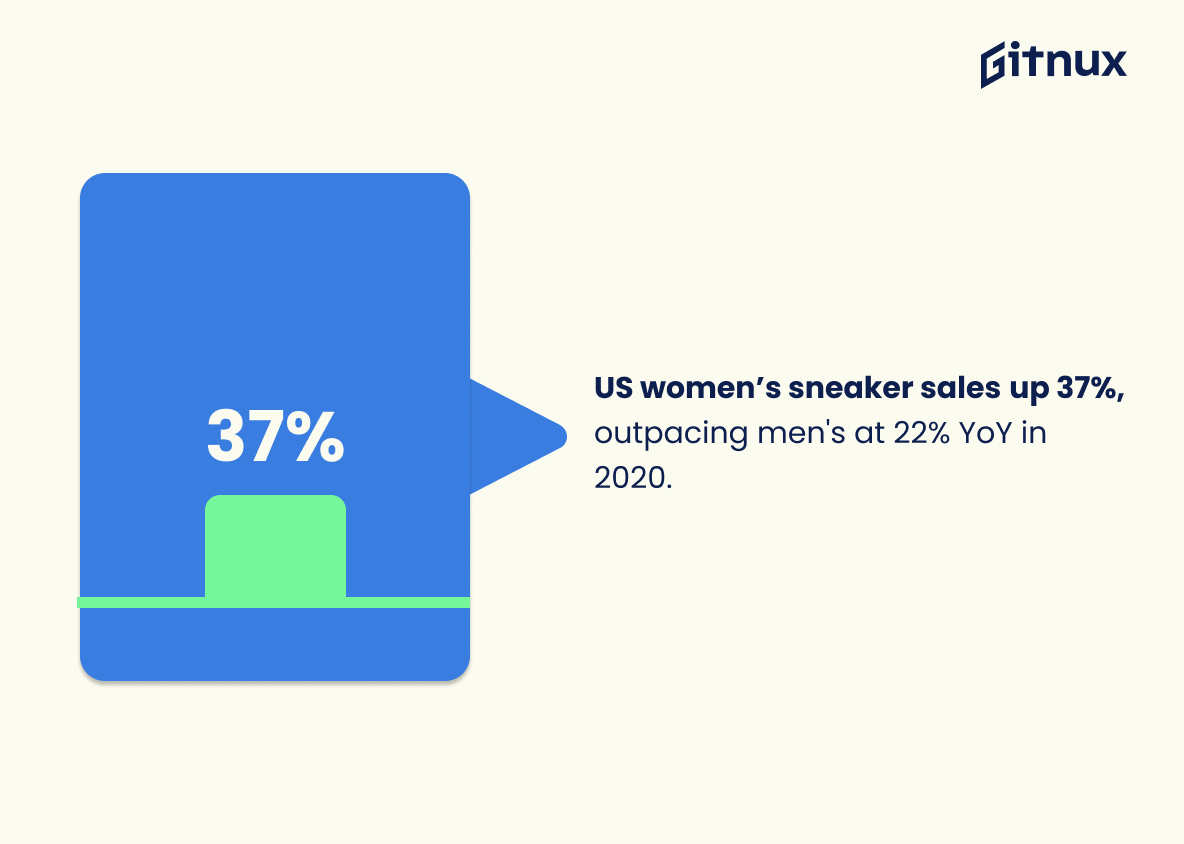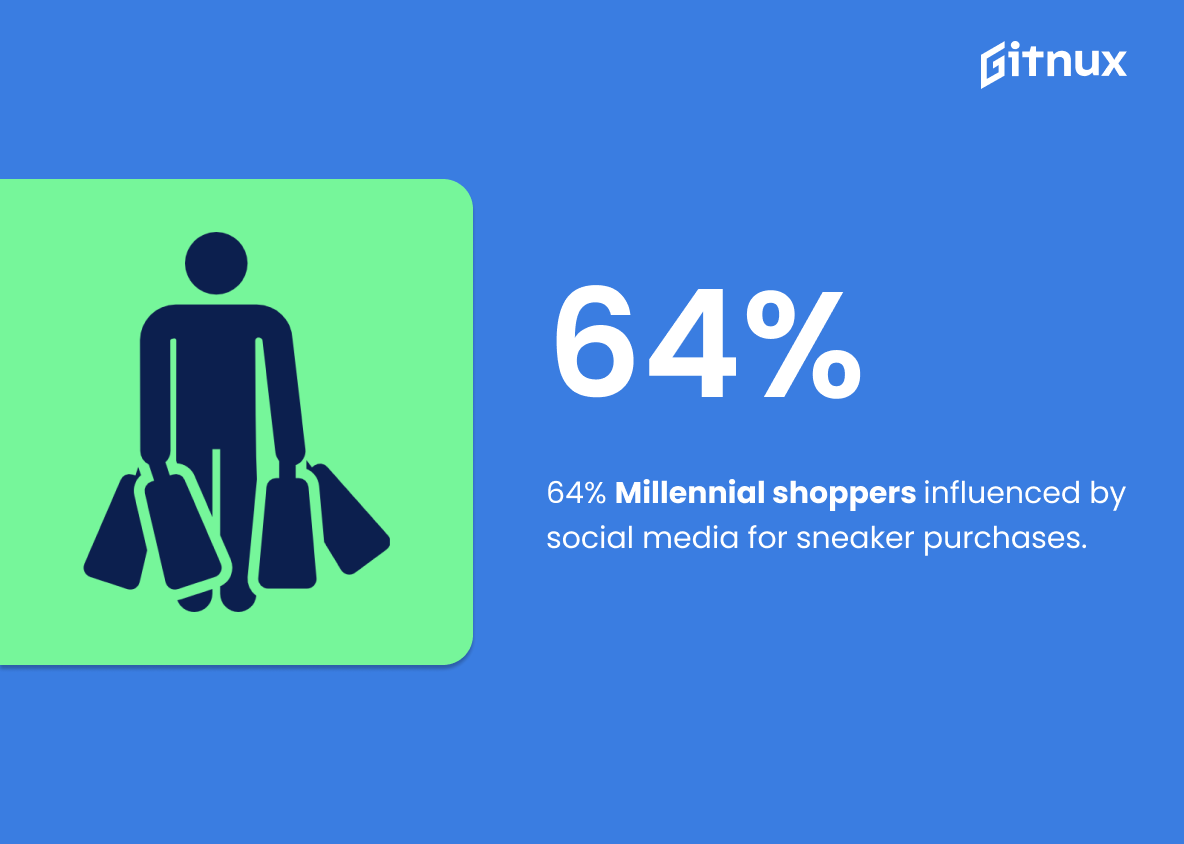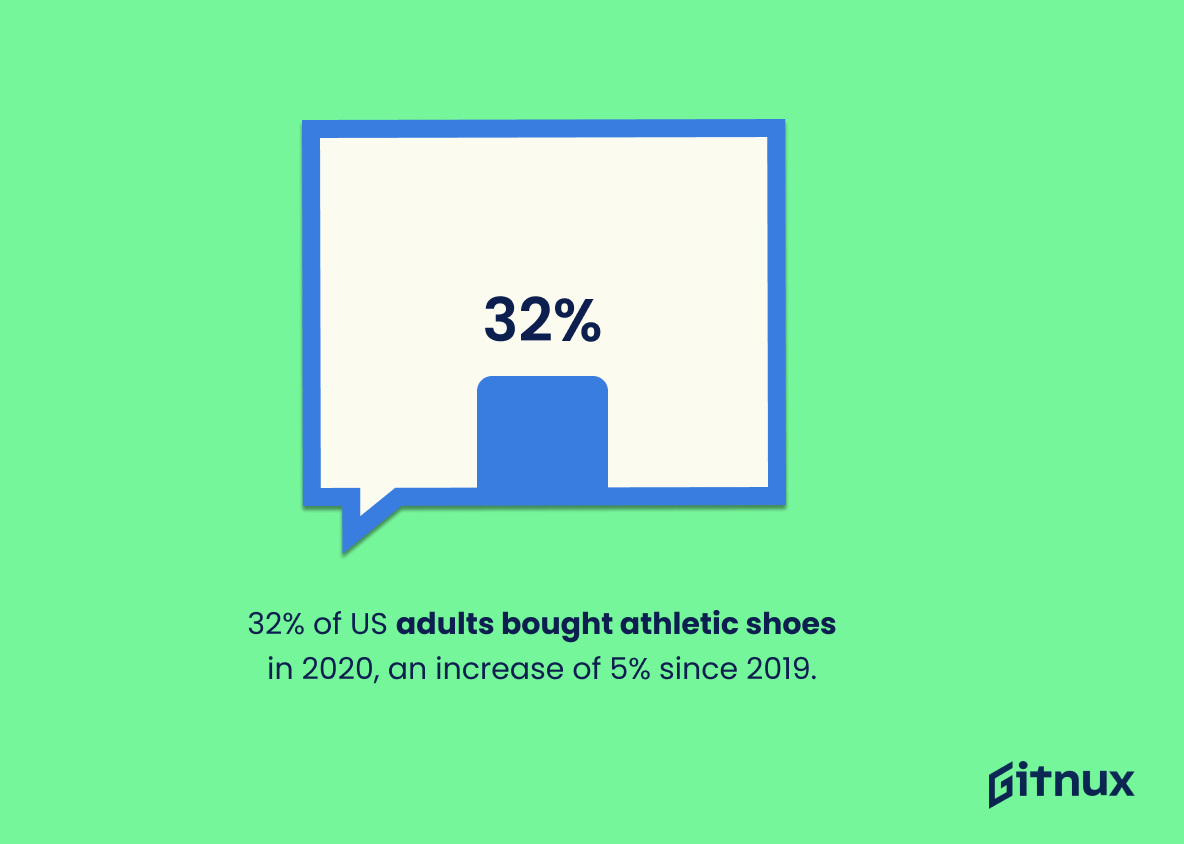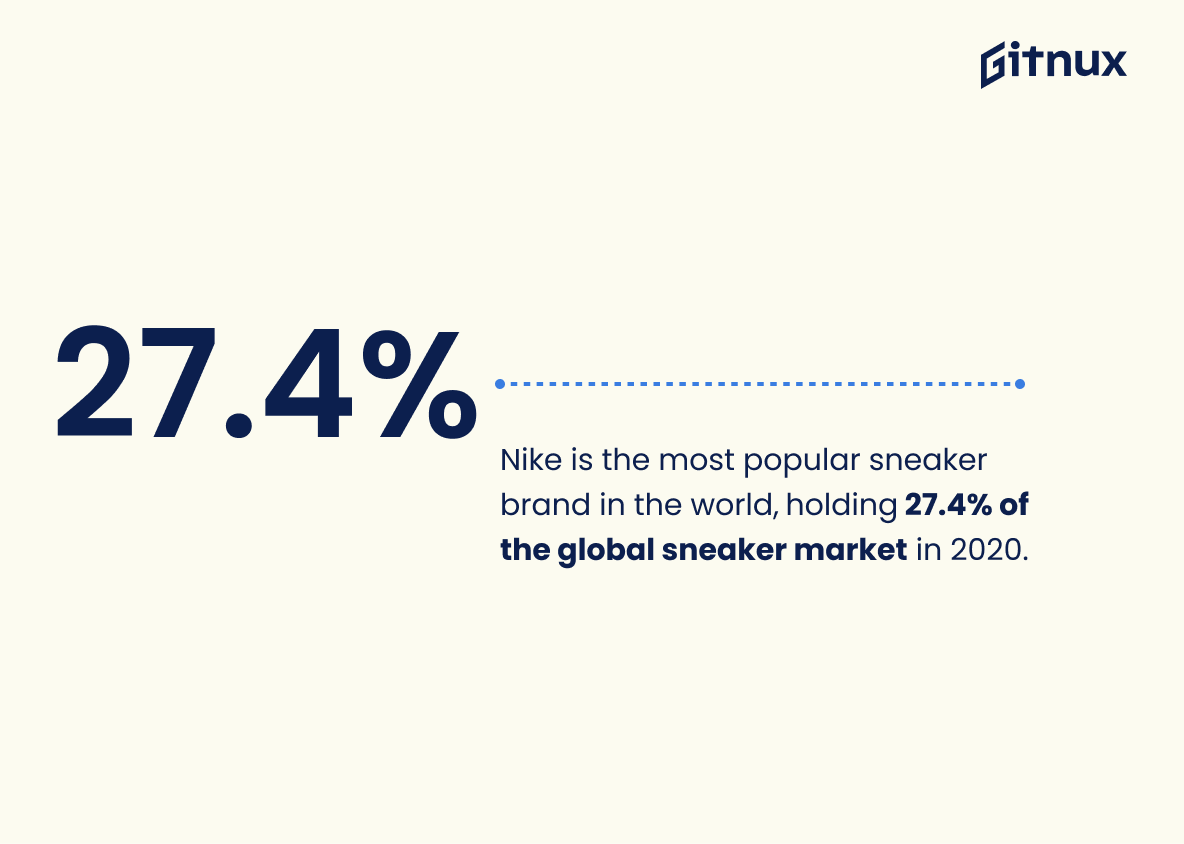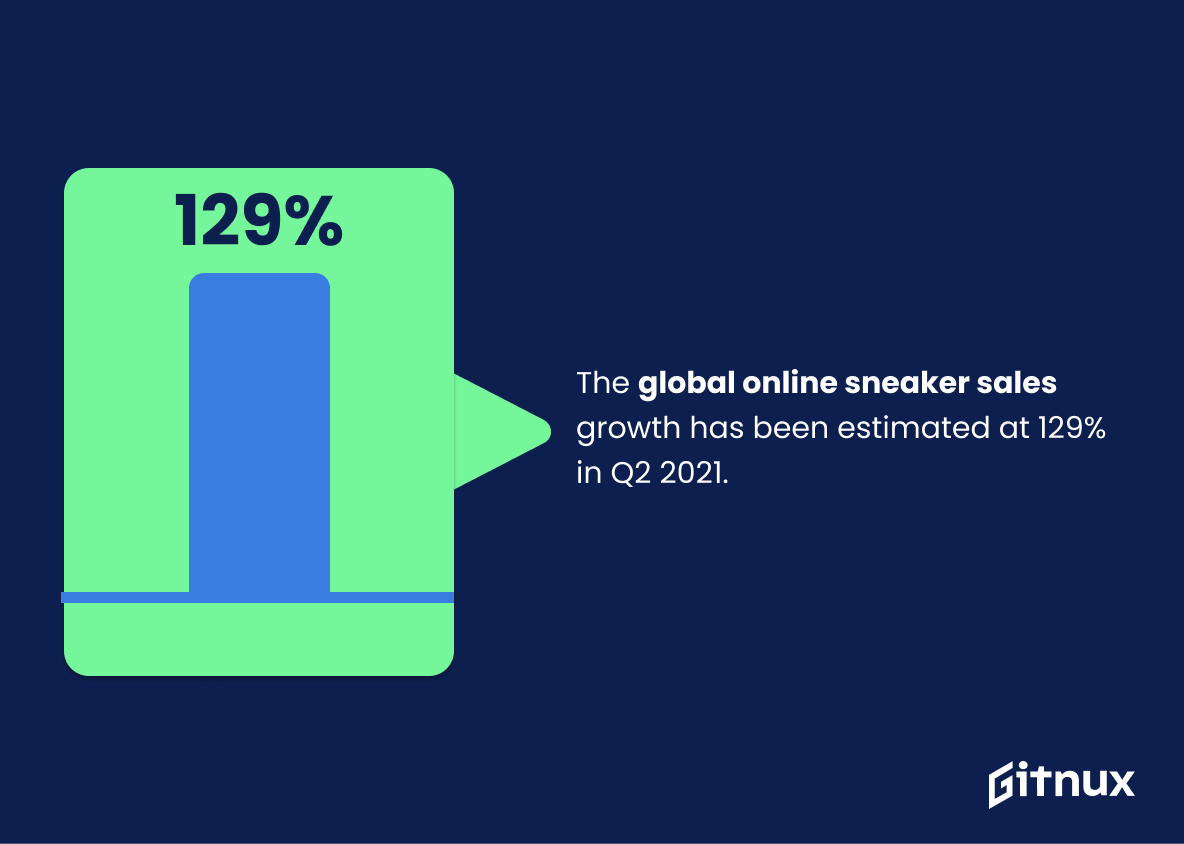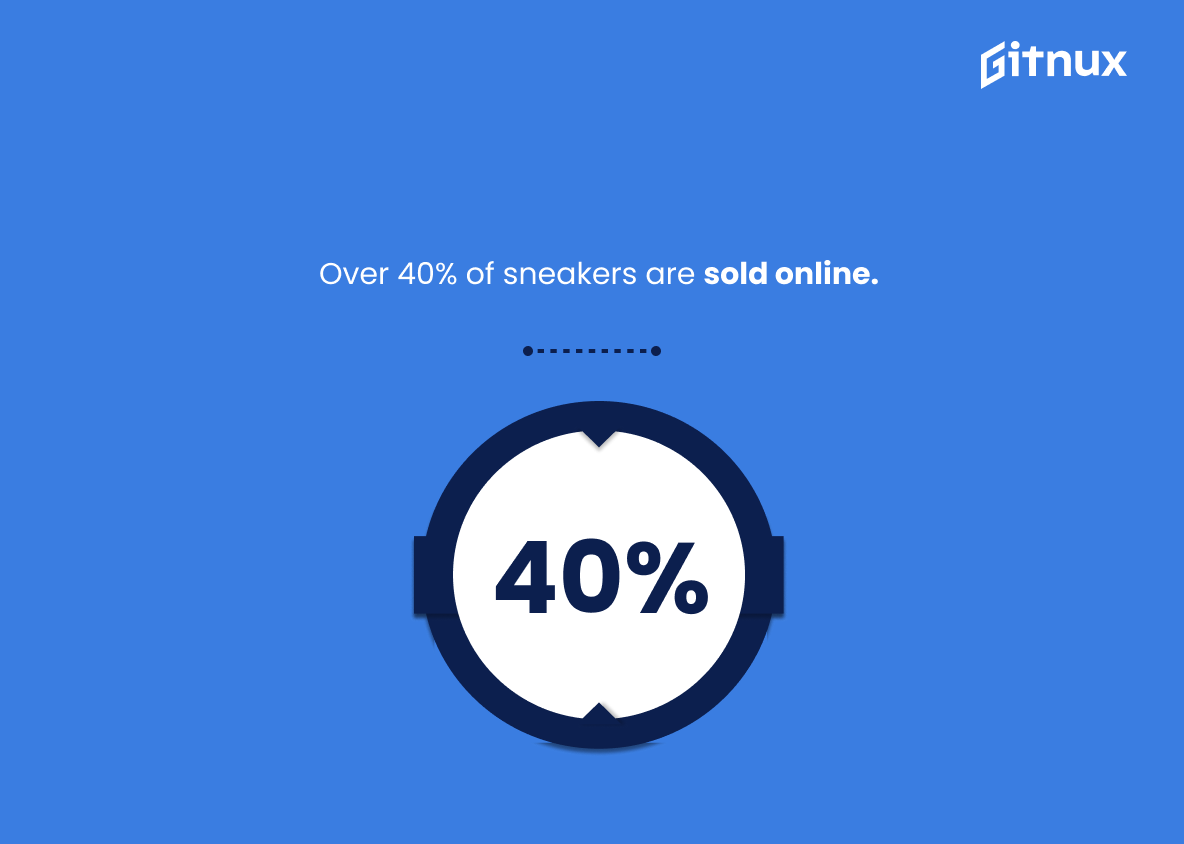As the threads binding popular culture, sports, and even contemporary fashion, sneakers have evolved from functional sportswear to a statement-making necessity. The sneaker industry has been on a fast-paced rise, flourishing into a multi-billion-dollar market.
In this blog post, we will pound the pavement of the global sneaker industry, exploring its numerous twists and turns. We’ll dive deep into intriguing statistics that put the spotlight on market valuations, trending patterns, consumer demographics, top competitors, and the invisible forces driving this incredibly dynamic industry forward. So, lace up and let’s jump into the fascinating world of sneaker industry statistics.
The Latest Sneaker Industry Statistics Unveiled
The global sports footwear market was valued at approximately 98.36 billion U.S. dollars in 2020.
Delving into a universe of numbers, the jewel that caught our eye was the stunning reflection of the global sports footwear market standing proudly at an enormous valuation of approximately 98.36 billion U.S. dollars in 2020. This isn’t just a striking figure. It serves as a testament to the growing popularity and indispensability of sporty kicks in our modern lifestyle, painting a vivid picture of a global audience spending extensively on their favorite pairs.
This substantial market value embeds itself as a pivotal player in any discussion about Sneaker Industry Statistics. This mammoth figure unearths different layers of understanding of the industry’s health and trajectory. From the massive potential for growth to consumer behavior, product demand, market trends, and brand influence, this behemoth shines a concentrated beam, lighting up insightful paths of information for anyone venturing to understand or engage with the sneaker industry.
This commodious valuation is not merely a number—it’s a robust testament to the sneaker industry’s global stature and influence. Without understanding the formidable economy of the sports footwear market, a blog on Sneaker Industry statistics would be like hosting the Olympics without a stadium. So, we hope you put on your statistical sneakers as we run through the rest of these dynamic and thrilling figures.
In 2020, over 30% of the athletic footwear market share belonged to North America.
Unraveling the high-octane dynamics of the sneaker industry, one cannot hopscotch around the 2020 titbit that North America sprinted away with more than 30% of the athletic footwear market share. This numerical nugget metaphorically laces up the economic running shoes of the region, uncloaking the prodigious impact it has on the sneaker universe.
It flamboyantly paints North America as a brobdingnagian playground of sneaker aficionados. Hence, for firms dabbling in sneaker designs, factories, and floggings, North America emerges not just as a mere market, but an enormous arena to hoop their sales numbers, outstep their competition and set the pace for the global athletic footwear trends.
Sneakers consumer market in China is expected to reach 95.6 billion RMB ($13.84 billion) in 2023.
In the vast, fast-paced world of sneaker market, the projected tremendous growth of the Chinese sneaker consumer market, slated to hit an astonishing 95.6 billion RMB ($13.84 billion) in 2023, sets the stage for heightened global anticipation. This prediction offers a titillating glimpse into the insatiable appetite of China’s burgeoning middle class for sneakers, promising tremendous opportunities for both established and emerging sneaker brands.
Spurs iconoclasts seeking out exciting new market frontiers, it offers a bold testimony to the irresistible allure of the East in shaping the future of sneaker industry. This forecast not only underscores China’s prominence in the global sneaker marketplace but also reaffirms its potential to redefine trends and navigate new growth trajectories in the global barometer of sneakeronomics.
Women’s sneakers sales grew by 37% year-over-year in the United States, outpacing the men’s category, which grew by 22% in 2020.
This statistic pulls back the curtain on an unexpected shift in the sneaker industry. Previously a seemingly male-dominated sector, the tides are turning as women tip the scales with a 37% year-over-year growth in sneaker sales. This bolt of growth in the women’s category surpasses the men’s segment, which exhibits a 22% increase in 2020.
Such a surge not only illuminates women’s growing interest in this industry but also presents a rich gold mine of market potential for sneaker brands. As the trend accelerates, it opens doors for brands to focus more resources on women’s sneaker designs and to strategize their marketing campaigns towards female consumers, ultimately fostering diversity and inclusion in the sneaker community.
The Sneaker reselling market is predicted to reach $6 billion globally by 2025.
Delving into the realm of sneakers, this intriguing forecast about the sneaker reselling market hitting a resounding $6 billion by 2025 shines a spotlight on the growing dynamism and financial potential in this sector. Laced tightly into our blog post on Sneaker Industry Statistics, this prediction becomes the canvas upon which we paint the broader picture of an industry undergoing rapid transformation.
More intriguingly, it illuminates the powerful consumer trends and market forces that are molding the future of the reselling realm, underlining its potential to leapfrog from a mere sideline to a major player in the global sneaker industry. From a business perspective, this figure also represents new opportunities and challenges, thus shaping strategic decisions in marketing, supply chain, and customer experience. Not just a number, it’s a bold statement about potential shifts in consumption patterns and the ever-changing dynamics of the sneaker landscape.
In 2018, 64% of adult shoppers under the age of 35, or Millennials, were influenced to make a sneaker purchase based on what they saw on social media.
Highlighting the power of social media in the sneaker world, this statistic emphasizes an intriguing trend noticed in 2018 among adult shoppers of the Millennial age bracket. Holding a mirror to the impactful role of digital platforms, it suggests that a substantial 64% of these younger buyers were swayed to make a sneaker purchase, purely due to what they encountered on their social media feeds.
By nestling this statistic at the heart of the Sneaker Industry discussion, it not only reveals how the industry has vibrantly married with tech-forward marketing channels, but it also anticipates how these symbiotic ties might play a transformative role in shaping future consumer behaviors and industry practices. Further, it underscores the necessity for sneaker brands to cultivate a dynamic social media presence in order to tap into the buying potential of this substantial demographic of younger adults.
32% of US adults bought athletic shoes in 2020, an increase of 5% since 2019.
The powerful pulse of the sneaker industry is clearly evident in the captivating revelation that almost one-third of US adults have contributed to this marketplace by purchasing athletic shoes in the year 2020. This already impressive figure is illuminated even further when considering the impressive growth it represents, a solid leap of 5% from the previous year, 2019. It’s a telling testament to the ever-evolving appeal and importance of sneakers to the American consumer.
This boost in demand not only underscores the strengthening position of the sneaker industry but also paints an evocative picture of shifting consumer preferences towards sporty footwear. The increase in sneaker owners and enthusiasts unequivocally sends a compelling message to stakeholders across the footwear industry, potentially influencing design, production, marketing, and sales strategies. Truly, the robust strength of the sneaker culture can hardly be overemphasized.
Nike is the most popular sneaker brand in the world, holding 27.4% of the global sneaker market in 2020.
Grasping the powerful foothold that Nike has in the global sneaker industry, with a commanding 27.4% share in 2020, enlivens the dynamics and competitive landscape of the scene. This isn’t just a number, instead it stands as a shining testament to the brand’s successful strategies and the loyalty of its customer base.
It sets the bar high for other sneaker players, marking the grand pinnacle to aim for. It also offers a standard measure against which up and coming brands can gauge their progress and market acceptance. Furthermore, it gives readers an insightful perspective of consumers’ preferences, influencing factors in brand choice, and the broader trends underpinning this bustling industry.
The global online sneaker sales growth has been estimated at 129% in Q2 2021.
The pulsating heart of the sneaker industry’s narrative is captured by the captivating statistic: a monumental surge of 129% in global online sneaker sales in Q2 2021. This numerical testament to the sector’s health unveils the industry’s colossal appeal and relentless momentum.
It’s akin to a burning beacon, illuminating the sector’s staggering evolution, driven by digital forces and consumers’ insatiable appetite for sneakers. This data not only symbolizes vibrancy and vitality but also reflects the transformative nature of the digital consumer era that’s reshaping the sneaker landscape globally, making it a vital component in understanding the sneaker industry narrative.
Over 40% of sneakers are sold online.
To navigate the labyrinth of the sneaker industry, the baton of enlightenment emerges as the revelation that a staggering 40% of all sneaker sales transpire in online domains. This nugget of data is a conduit to the pulse of the shoe commerce world, where digital integration is no longer a futuristic luxury, but a prevalent reality.
It arms online entrepreneurs with empirical evidence on the potency of e-commerce, while enabling traditional retailers to acknowledge the rising digital dawn and adapt accordingly. It is a testament to changing consumer behaviours and a standing ovation to the dominant role of technology in reshaping industry strategies.
The athletic footwear market is predicted to reach USD 112.34 Billion by 2025.
Within the theater of the sneaker industry’s vibrant performance, the prediction of the athletic footwear market swelling to a gargantuan USD 112.34 Billion by 2025 strikes an impactful note. Why? This monumental growth projection underscores the persistent upsurge in consumer interest, a trend that is driven by the burgeoning prominence of sports, fitness consciousness and the ceaseless influence of pop culture that romances the athletic footwear.
For those navigating within the sneaker industry, it’s akin to the foretelling of a bountiful harvest, signaling thrumming opportunities to cultivate innovative designs, cater to consumer predilections, and potentially harvest a substantial share from this expanding billion-dollar pie.
Sneakers account for almost 60 percent of all footwear produced globally.
Highlighting that sneakers constitute nearly 60 percent of all footwear manufactured worldwide provides a powerful illustration of the dominant position the sneaker industry holds within the broader footwear market. Not only does this fact underscore the immense scale and reach of this specific segment, but it also offers a compelling testament to the role that sneakers play in our everyday lives, be it in fashion, sports, or casual wear.
The prevalence of sneakers production bears witness to shifts in consumer preferences, design innovations, and marketing triumphs. The fact that over one-half of all shoes made globally are sneakers has serious implications for various players within the industry, from designers and manufacturers to retailers and consumers. Such a robust statistic serves a crucial role in painting a vivid picture of the roaring sneaker landscape, augmenting the impact of any discourse on sneaker industry statistics.
Almost 23% of Nike’s footwear sales revenue came from the Air Max line in 2020.
This intriguing piece of data paints an eye-opening picture of just how influential the Air Max line is to Nike’s financial standing within the global sneaker industry. With almost a quarter of Nike’s footwear sales revenue in 2020 emanating from this line alone, it hints at the impact that specific collections can hold over a brand’s overall performance.
For any sneakerheads or industry insiders reading the blog post, it provides a stark insight into consumer behavior, product popularity, and the power of brand loyalty that underscores the whole sneaker market. Additionally, it further underscores Air Max’s vast appeal, influencing both the strategy of rival brands and the buying considerations for avid sneaker collectors.
Conclusion
The sneaker industry is a thriving and rapidly-evolving market boasting impressive statistics. An in-depth look at these numbers reveals a pattern of sustained growth, with technological advances, prevalent sneaker culture, and sports endorsements driving this progress. These statistics illuminate why savvy entrepreneurs should keep a keen eye on this industry.
Just as sneaker designs continue to evolve, so too will the industry’s growth and influence across the globe. We will continue to closely monitor the dynamic world of sneakers, keeping you informed and up-to-date with all the latest trends, statistics, and industry predictions. Stay tuned for more exciting insights that help unravel the ever-expanding sneaker market universe.
References
0. – https://www.www.statista.com
1. – https://www.www.npd.com
2. – https://www.www.globenewswire.com
3. – https://www.www.coresight.com
4. – https://www.www.huffpost.com
5. – https://www.fortune.com
6. – https://www.retail-index.com
7. – https://www.www.mintel.com
8. – https://www.www.datareportal.com
9. – https://www.www.businessoffashion.com
